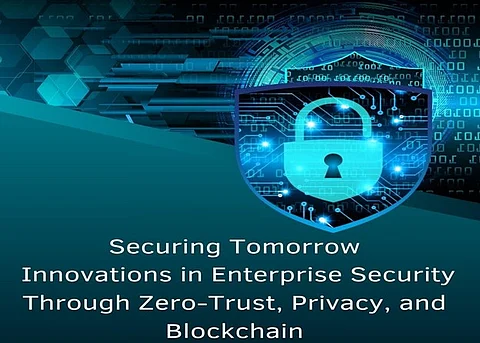

In a world where cyber threats evolve faster than ever, Siva Prakash Bikka offers a roadmap to the future of enterprise security in his recent article. With extensive experience in security frameworks, his insights delve into transformative technologies reshaping how organizations safeguard their operations and data.
The old school approach of "trust but verify" is no longer found in the new Zero-Trust Architecture (ZTA), which assumes that every user and device is an attacker by default. It has made the pace always high in vigilance and access control and, above all, security is not static. The innovative principles of ZTA are continuous authentication, granular access control, microsegmentation, and real-time monitoring.
Continuous Authentication ensures that verification isn’t a one-time event but an ongoing process. With adaptive authentication protocols, organizations can tailor verification intervals to risk levels. For instance, highly sensitive resources may require verification every 30 seconds, whereas lower-risk resources might have longer intervals. This approach significantly reduces risks stemming from compromised credentials.
Granular access control enhances security by providing "just-in-time" access permissions that automatically expire after a specified period. It ensures that the access is strictly need-based and temporary, which limits exposure to unauthorized actions. Enterprises managing huge ecosystems with thousands of permission sets have seen dramatic reductions in unauthorized access incidents since implementing these controls.
Microsegmentation, breaking down networks into smaller zones to keep a potential breach, is another pillar of ZTA. This way, no matter how bad the breach may have been in one of these segments, the threat won't be able to run wild in the network. Coupled with AI-based real-time monitoring, ZTA results in much quicker responses to security incidents while making compliance and operations more effective.
As digital operations expand, the importance of robust data privacy frameworks has grown exponentially. Organizations are under pressure to meet stringent regulations like GDPR and CCPA, necessitating advanced systems to classify, protect, and manage data efficiently.
These frameworks are founded on data mapping and classification. Identifying sensitive data and then categorizing it properly will help a business to ensure compliance with several regulatory requirements. Automated tools for data discovery have revolutionized this process by significantly reducing manual effort and improving accuracy by huge margins.
A key concept in modern frameworks is Privacy by Design, where systems are designed to prioritize data privacy from the start. This approach proactively minimizes breaches and reduces compliance risks while lowering the associated costs. Organizations that embrace this principle report fewer privacy-related incidents and increased efficiency in dealing with compliance audits.
Another very important area that has streamlined processes is User Rights Management. Automated platforms have minimized response times as enterprises handle thousands of data subject requests every month, thereby boosting efficiency and adhering to regulation. Cross-border data transfer management mechanisms have enabled businesses to cope with the challenges of international operations more effectively by adhering to local data sovereignty laws.
Blockchain technology has evolved enterprise security in terms of offering decentralization, immutability, and transparency to address challenges in modern data management. With the ability to create immutable audit trails, this technology enhances accountability, reduces fraud, and fosters trust in transactions because the alterations are noticeable. Blockchain makes millions of accurate transactions every day.
Among the key features of smart contracts is the automation of policy enforcement, compliance processes, and eliminating middlemen for maximum cost savings and efficient operation. It ensures that organizations minimize manual intervention in the verification processes thereby making it more reliable.
Blockchain achieves new standards in security and efficiency through its deconcentration of identity management. This means that risks about the theft of identities are minimized as well as accelerates the authentication process. Blockchain-based systems that manage high-scale verifications provide unmatched precision distributedly.
The future of enterprise security lies in the combination of AI with innovative frameworks such as ZTA, privacy-centric architectures, and blockchain. The tools that are AI-driven enhance security detection and response systems, utilizing huge volumes of data to detect threats in real-time. Combining this with cloud computing results in scalability and flexibility so organizations can respond to the most advanced forms of attacks.
Convergence also helps optimize efficiency. Lower operational costs enhance resilience to cyber threats. Investment in integrated solutions from enterprises bodes well to keep up with the ever-evolving digital ecosystem.
In a nutshell, Siva Prakash Bikka concludes that with Zero-Trust principles, privacy-focused frameworks, and blockchain innovation, secure efficient enterprises are a reality. This technology addresses new-age cybersecurity problems and prepares companies for future resiliency. Businesses can guard their assets and ensure compliance as well as win trust by employing these solutions. His insights suggest proactive, adaptive security as a cornerstone for innovation and sustainable growth in an ever-changing threat landscape.
